Vegetables to plant in April: 10 crops to sow and grow
Feast your eyes on the best vegetables to plant in April, and crack on with courgettes, runner beans, giant squash and more
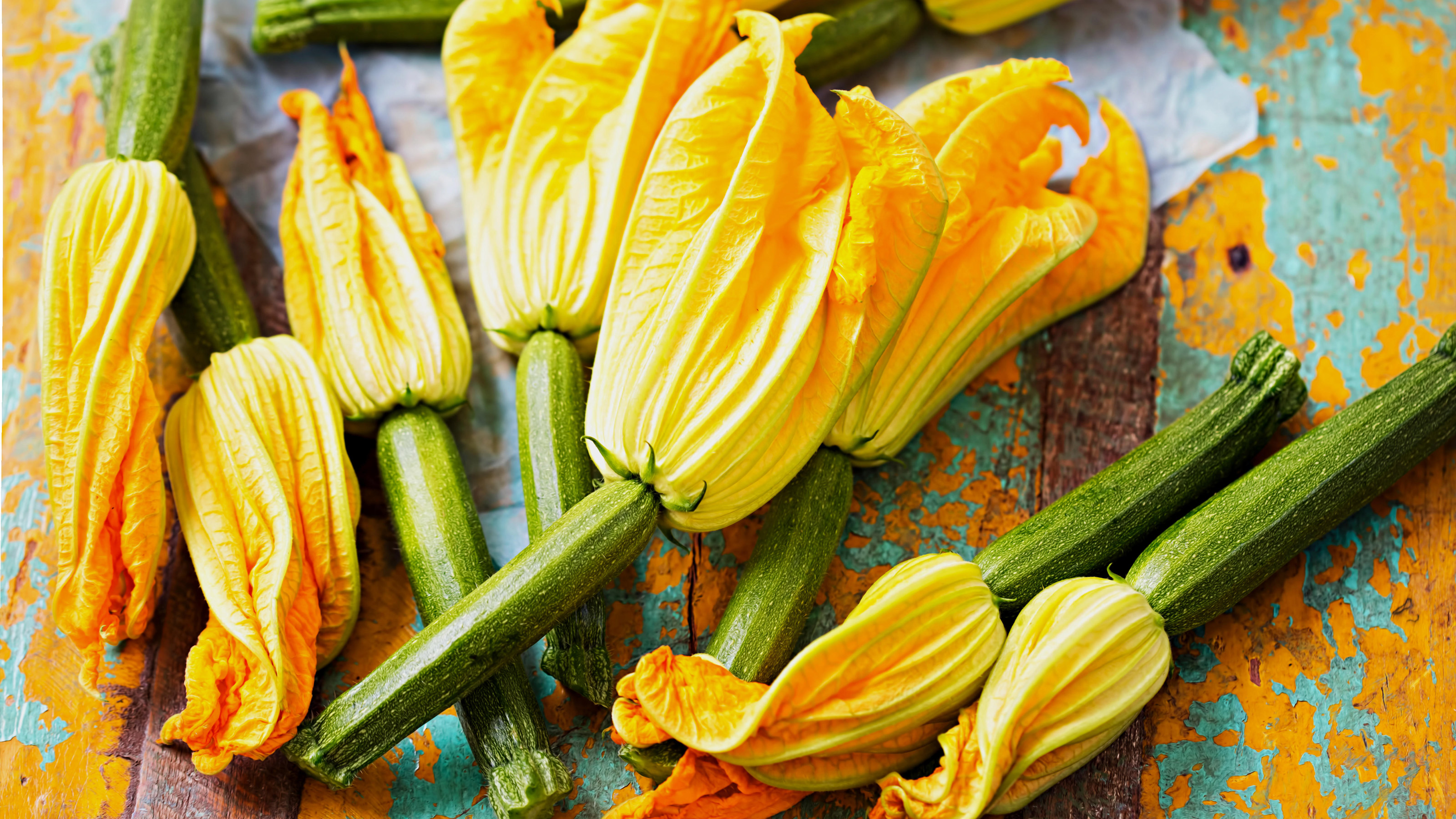

If you want the best vegetables to plant in April, one thing’s for sure: you'll have plenty to choose from. After months of anticipation, the gardening calendar steps up a gear, and all is bursting into life. With so much starting to happen at once at this point in the vegetable planting calendar, it can be a little overwhelming – but don’t panic! We’ve got your back.
Our round-up covers some of the most reliable, prolific and rewarding crops to start off in April, both undercover and in the ground. Some selections take time to bulk up, whilst others are ready as soon as 10 weeks after sowing. A few make gorgeous ornamentals, and one or two may even challenge how you define a vegetable! Just keep one eye on those perilous late frosts – and make the most of every space, inside and out, to cultivate that precious new growth.
Whether you’re looking to cultivate the tiniest cucumbers this side of Mexico, or add pizzazz to meal times with vibrant veggies like purple carrots, we’ve got you covered. So read on, and find out how to get cracking…
Boost your plot with the best vegetables to plant in April
Follow our guide to the best vegetables to plant in April, from colossal red cabbage and jumbo rainbow squash to speedy biddy beets. Spanning a gamut of tastes including super-sweet gypsy peppers, spicy roots and citrusy cucamelons, this round-up can help you start off all manner of garden and greenhouse crops. Make this your first port of call for guaranteed kitchen garden bliss.
1. Red cabbage
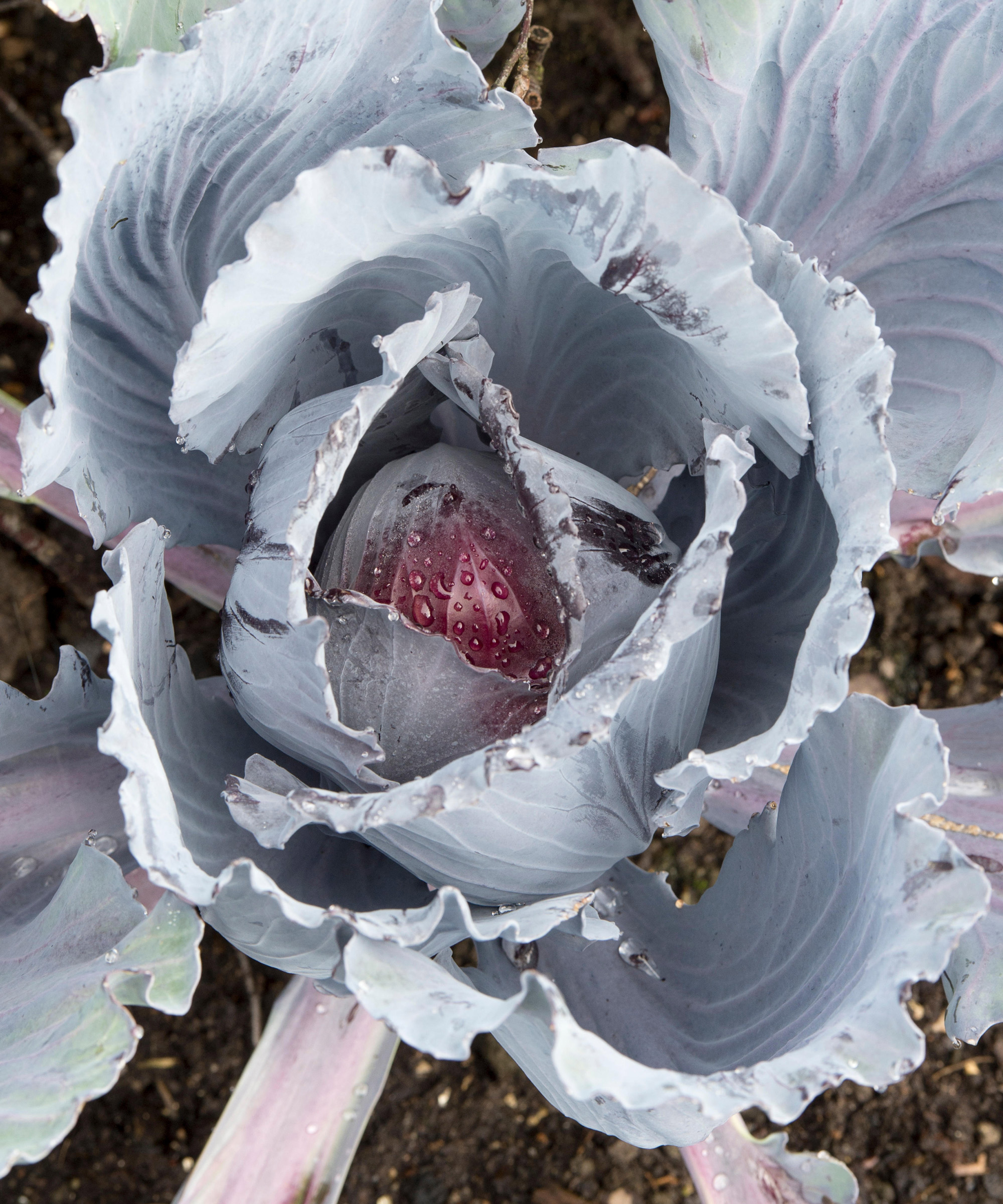
‘Red Drumhead’ is a luxury heritage red cabbage variety with densely packed leaves and a solid burgundy heart
Robust, generously packaged and stuffed with nutrients: not for nothing is Brassica oleracea capped as ‘king of the vegetables’. The first of our vegetables to plant in April is full of leafy goodness, with a twist. Unlike the Sweethearts and Savoys often found in veggie plots, these cabbages are ruby red. Mid spring is the last chance to sow these abundant beauties undercover, though you can start some in situ if the ground is warm enough. For those keen to know how to grow cabbage, this is an essential sowing. If you started in late winter, you can plant out now, too.
With their silvery outer foliage and tightly coiled burgundy hearts, red cabbages bring a flourish of regal grandeur to the veggie patch. They also pack 10 times the vitamin A of standard green cabbages, plus twice the iron. Recommended varieties include crunchy heritage ‘Red Drumhead’, high-yielding ‘Red Jewel’, weighty ‘Mammoth Red Rock’ and vibrant ‘Tinty’. Sown in early April and planted out early June while relatively cool is best, as growth slows down in the heat of summer.
Ample spacing, plenty of sunlight and rich, firm, well-draining soil (pH 6.5-7) are key to success. Check the site has partial shade and the ground is prepped with well-rotted organic material, taking full advantage of your composting options so your cabbages have the best foundations. Red cabbages are some of the best companion plants for cucumbers and also do well planted with celery, beetroot, thyme and mint. Keep well watered and weed-free, and your nutrient-rich king crimsons will be ready for coronation from late summer onwards.
2. Early turnips
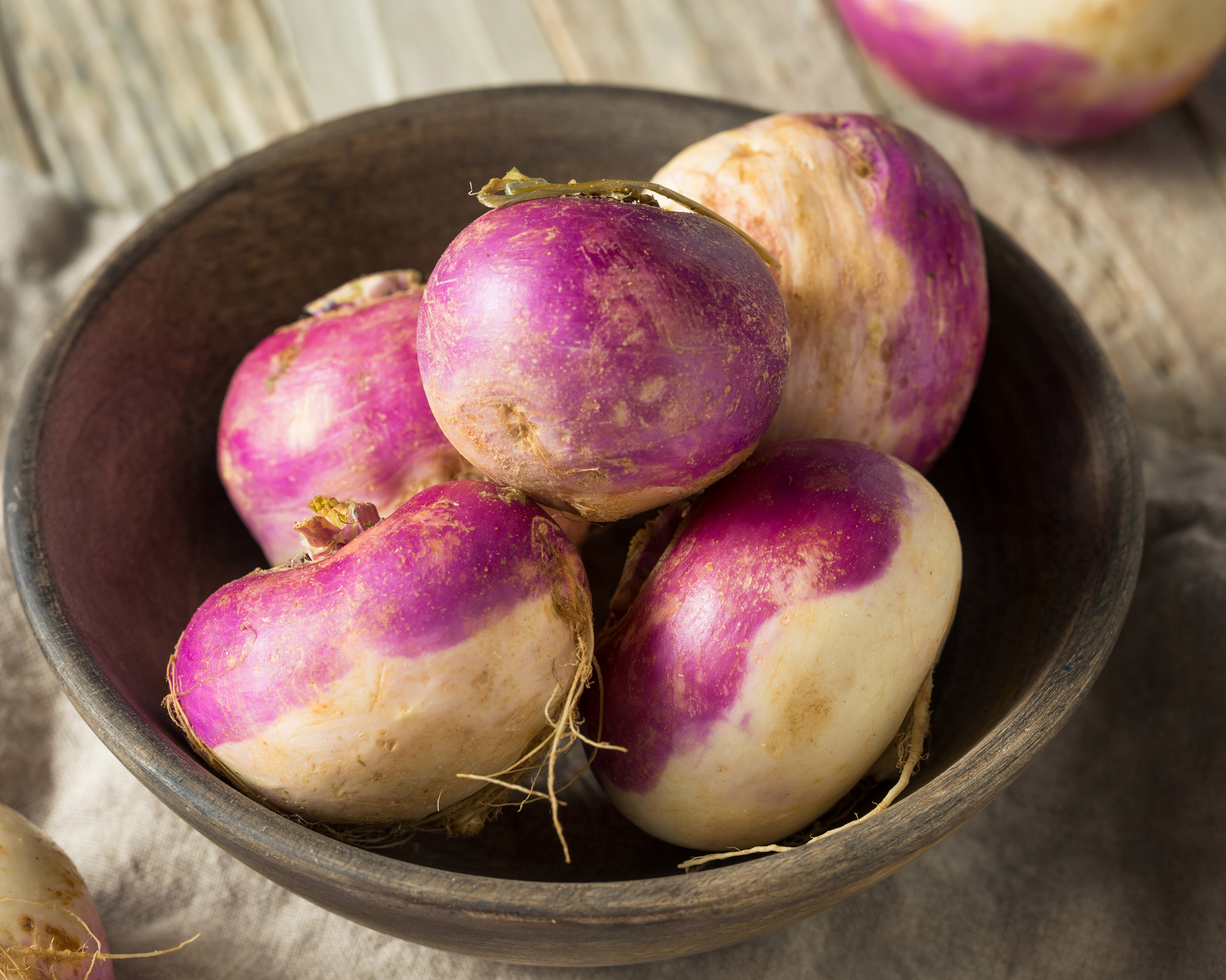
Turnip ‘Purple Top Milan’ from Suttons is a fast developer and can be grown under cloches – and the greens are nutritious, too!
Turnips may not have the most spectacular presence on the plot, but we urge you to make room for the more rotund members of the mustard family (Rutabaga rapa). Hearty, spicy and nutty, these bulbous, earthy taproots are essential vegetables to plant in April. They are agreeably low maintenance once settled, take little time to establish, and offer excellent storage potential for the months ahead.
Crucially, they are happiest bulking up while it’s mild and moist outside. Heat can stress plants and result in early bolting or woody roots. If you want a winning summer staple, early starts are strongly advised.
Pick a spot in sun or partial shade, and direct sow when ground temperatures reach 40°F (4˚C). Add some organic material or compost prior to planting, and water well after sowing. Keep soil moist and, once your plants are a few inches high, thin to 6in (15cm) apart so they form strong roots. Turnips make great companion plants for garlic and peas. And if you are looking to grow tomatoes, squash or celery, turnips are excellent aphid repellers – one of their many charms!
Turnips are quick to harvest, and are ready 45-60 days after sowing. Harvest early for optimum tenderness. Attractive earlies include sweet ‘Tokyo Cross’, juicy Japanese ‘Snowball’ and Italian heirloom ‘Purple Top Milan’ with its lively tinted roots.
3. Runner beans
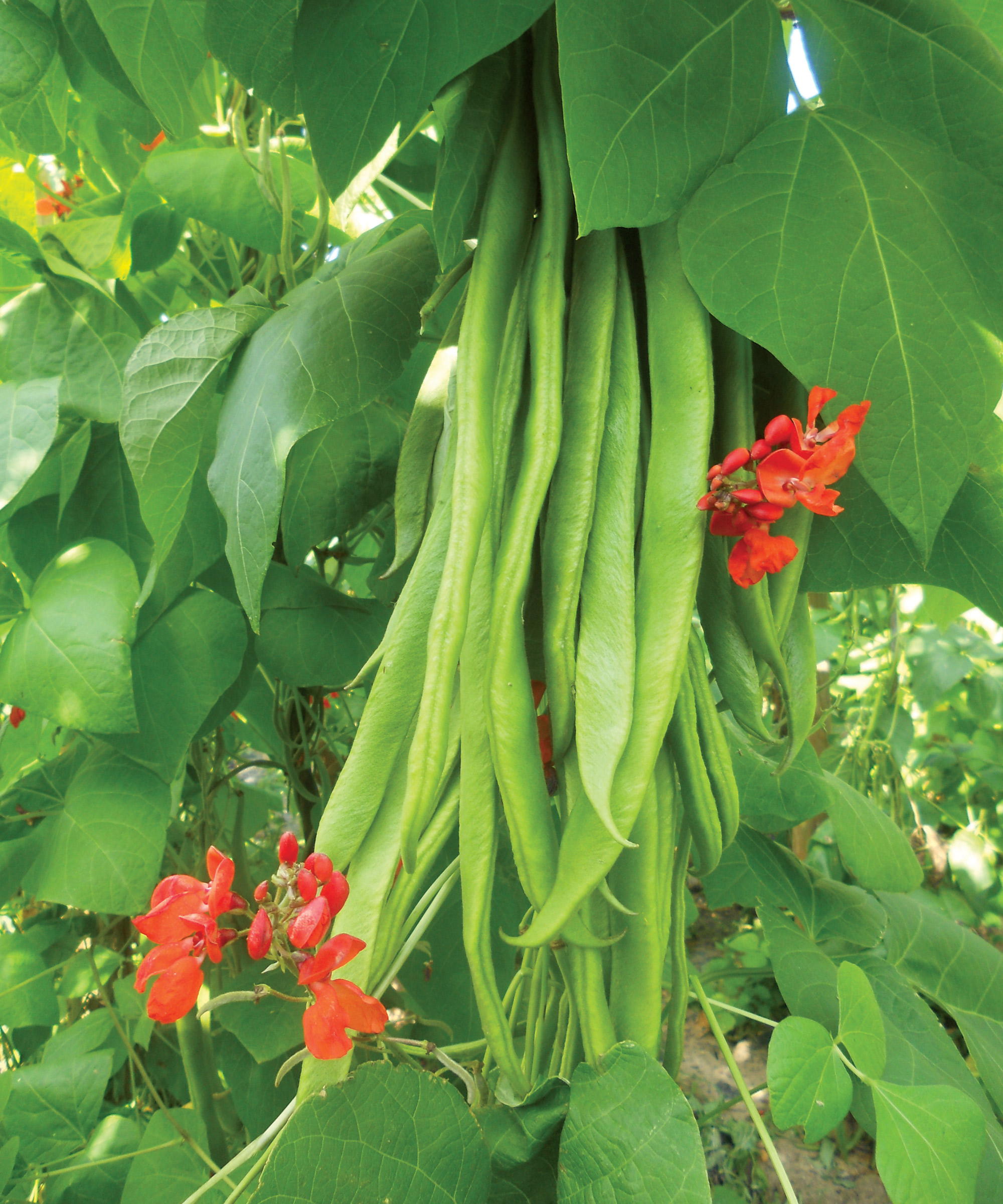
‘Firestorm’ from Suttons is a striking ornamental and a prolific cropper, yielding plenty of tasty stringless beans
Few crops are as pretty or as prolific as the runner bean (Phaseolus coccineus). You have a big window of opportunity, but our advice is to start now. It establishes stronger root systems and gives the best shot at an extended harvest season.
Knowing how to grow runner beans is a big advantage as you embark on spring sowings, not just as a generous cropping staple. These charming (and rampant) plants make striking ornamentals for a potager garden and for rustic vertical garden ideas – and with the right climbing plant support transform even modest spaces into towering displays (X-shaped frames are ideal). They are some of the most reliable and uplifting vegetables to plant in April.
The trick with growing this kitchen garden classic is watering, says Amateur Gardening’s expert Lucy Chamberlain. To ensure the best pod set, hydrate frequently and thoroughly. ‘Mature plants have a massive leaf surface area and swelling pods increase moisture demands further, so ensure they are well watered, especially once flowering begins,’ she advises. Moisture-retaining bark mulches and high-nitrogen liquid feeds also help. You can reduce the risk of stringy pods by choosing modern self-fertile varieties, and picking regularly while young and tender.
Many new varieties are bred for drought resistance and stringless pods. Top picks for runaway success include early ‘Scarlet Emperor’, high-yielding ‘Red Rum’ and bicolored ‘Tenderstar’. Anyone who knows how to grow French beans will love hybrids like red-flowered ‘Firestorm’, white ‘Moonlight’ and compact ‘Jackpot’. There you have it: a long tasty summer of stellar beans guaranteed!
4. Squash
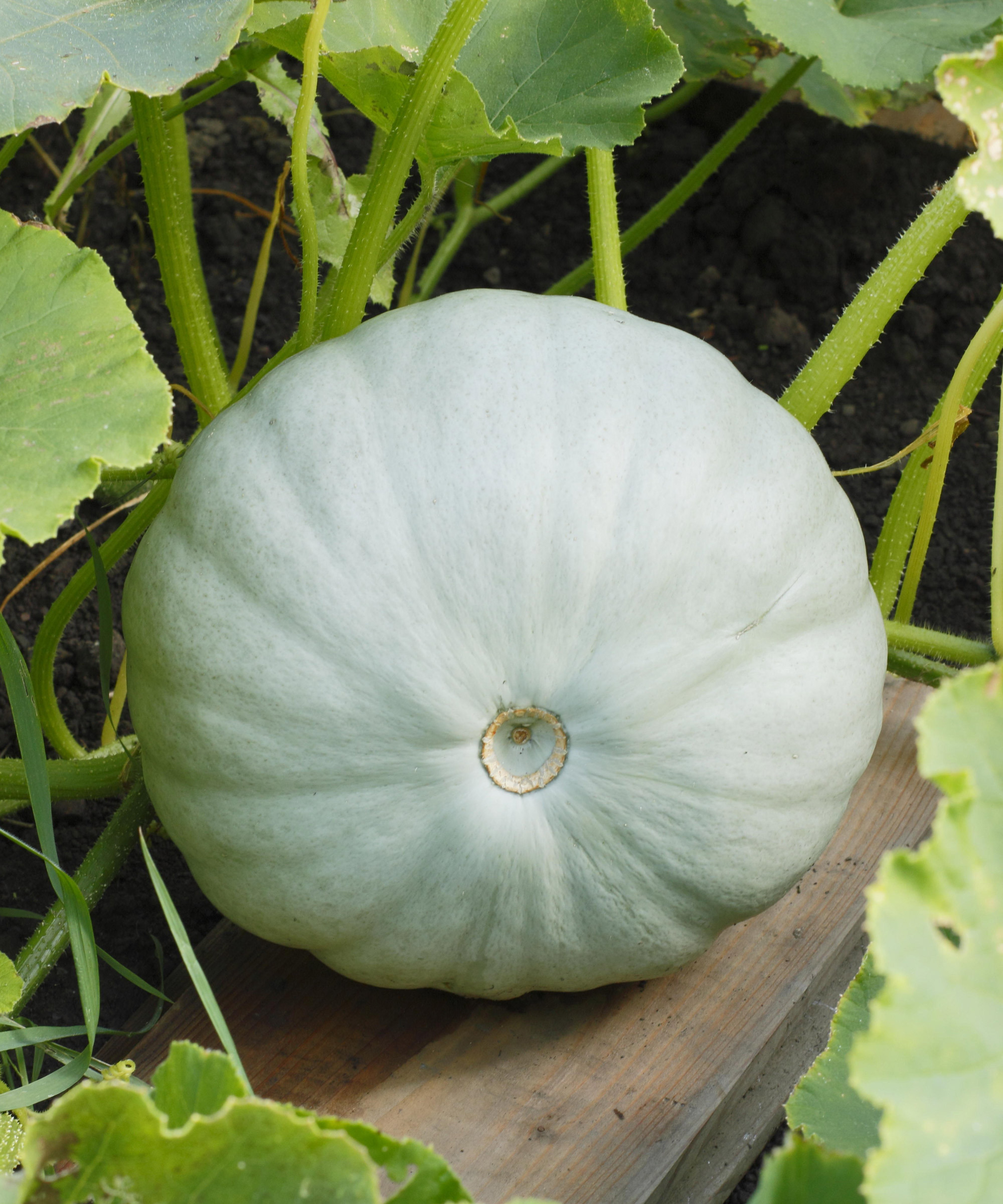
‘Crown Prince’ is a sweet and nutty winter squash combining intensely orange flesh with a gorgeous greeny-blue skin
The umbrella term ‘squash’ covers a multitude of options: squat patty-pans, acorns and dumplings; elongated gourds and butternuts; mammoth ambercups, sunshine kabocha and honey bears. You’d be forgiven for thinking these are the trickiest vegetables to plant in April: well, think again. Nutty ‘Crown Prince’, buttery ‘Hunter’, vibrant ‘Uchiki Kuri’ and stripy sweet potato-like ‘Honey Boat’ are amongst the easiest vegetables to grow in your garden. Whether you grow butternut squash or a more colossal cropper, the main thing is giving them ample time to bulk up and develop those thick outer skins, hence the need to start in spring.
Ideally, you’ll sow your squash indoors in April, says Chris Bonnett of Gardening Express – this is to avoid that last frost which sometimes happens early in spring. Sow half an inch deep and keep at 18°C/64°F until ready to plant out in June. ‘If you sow outside, dig a decent-sized hole and fill it with compost before placing a seed in the middle,’ says Chris.
Lucy Chamberlain recommends constant, ample moisture as plants flower and fruits swell (upturned pop bottles sunk into the earth are ideal) for the most lavish returns. Peg meandering stems into a spiral, and make sure plants have plenty of sunshine and space to ensure abundant harvests.
Squash are some of the best companion plants for peppers and great planting partners for sweetcorn, peas, beans and radishes. A fortnightly high-potash liquid feed works wonders once first fruits appear, ensuring that final heft. A ‘dark’ mulching of bark chips or black polythene also sets them up nicely for the months ahead, helping to insulate the roots of your burgeoning brood of garden giants.
5. Purple carrots
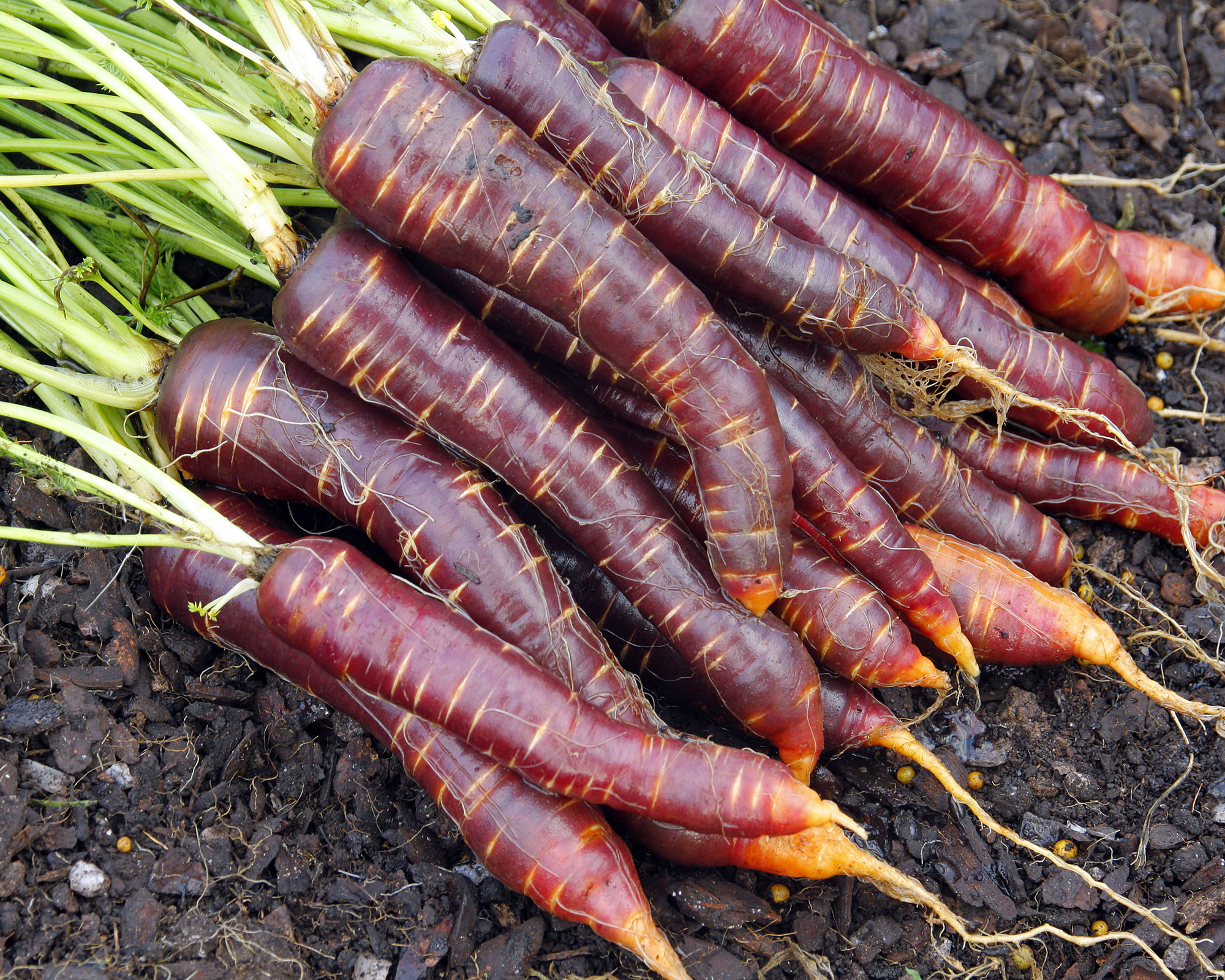
With rich purple skins and deep orange flesh, ‘Purple Haze’ carrots combine a sweet, spicy taste with dramatic dinner-dish potential
They may seem novelty, but purple carrots (Daucus carota) predate their classic orange counterparts by some stretch, with long established roots in our gardening heritage.
Hailing from southern Europe and Asia, they have been enjoyed for centuries but are now experiencing a rainbow renaissance. Their vibrantly tinted taproots get their bold pigment from the presence of anthocyanins – also responsible for the superfood status of blueberries and eggplants. Loaded with antioxidants and vitamin A they are lovely to look at, many boasting deep burgundy and black skins.
Despite their olde worlde bearing, they mature quickly (60-70 days). And for those who know how to grow carrots, luscious purples have few cultivation requirements. This entry in our vegetables to plant in April is, however, best in mild climes: its intense flavor is compromised once things hot up, and defects occur in heat. Spring is best for kick-starting the likes of Nantes ‘Purple Haze’, feisty ‘Purple Dragon’ and uber-sweet ‘Cosmic Purple’; the cooler you keep them, the sweeter they’ll be.
Growing in situ is perfect – just check the soil is well raked, light, sandy and stone-free. Make drills deep to combat droughts, cover with cloches, and water well. These crunchy croppers are some of the best vegetables to grow in raised beds if they have ample depth for healthy roots; they make excellent companion plants for onions, tomatoes, parsley and mint. They are also excellent options for landscaping with lavender to enhance your purple potential! Just remember to thin twice to 6in (15cm) apart, says Lucy. This is your ticket for high-quality roots that rank highly for taste as well as regal bearing.
6. Courgettes
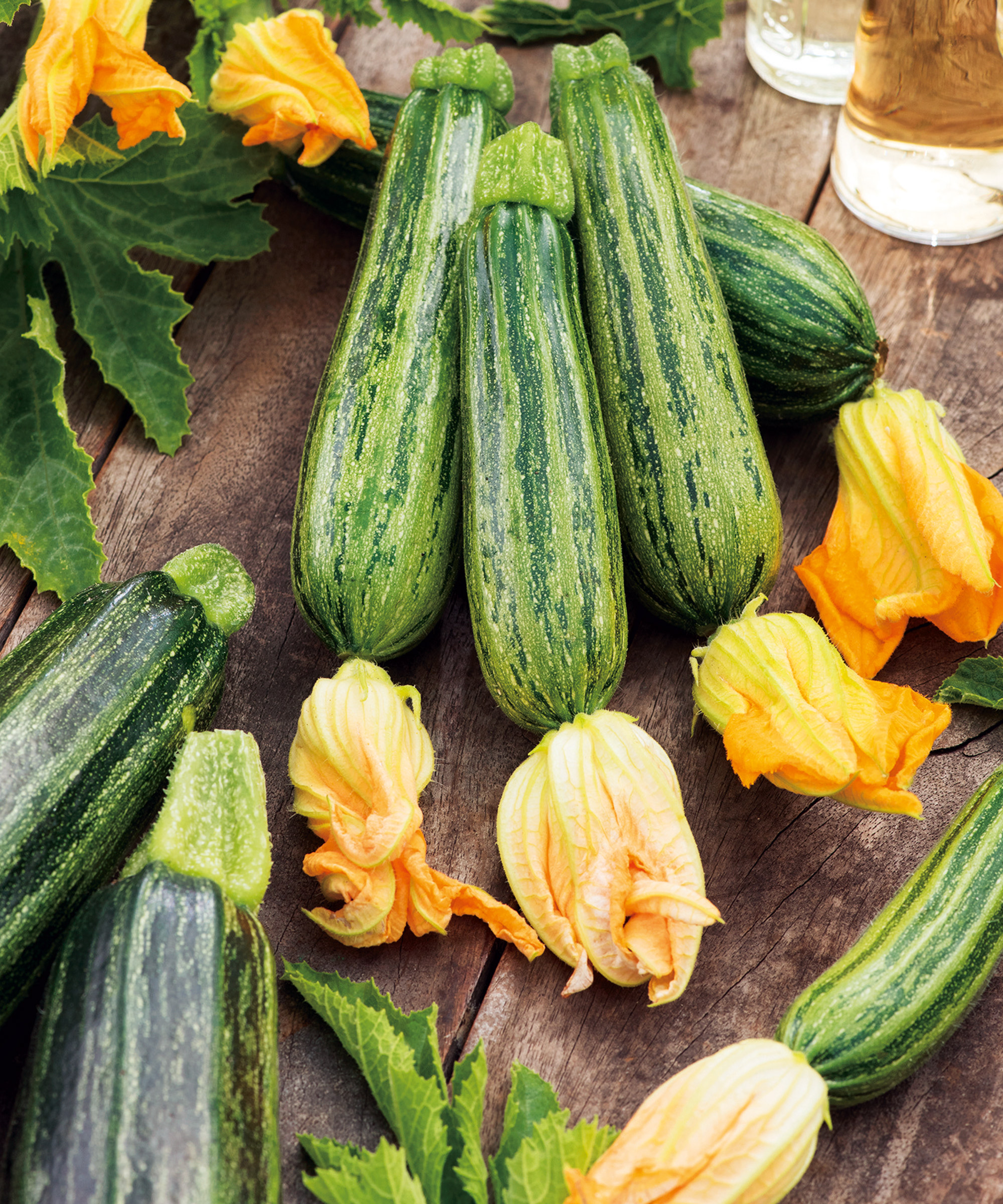
Courgette ‘Courcourzelle’ from Suttons is a small and stripy old Italian heirloom variety with a sweet and nutty flesh
If any vegetable offers you unconditional love, it’s a courgette, says Lucy Chamberlain. ‘All these gentle giants want is a dollop of sunshine and a good glug of water – other than that, they pretty much get on with it.’
If only for this reason, courgettes aka zucchini (Cucurbita pepo) are some of the best plants for beginners and a must-have entry in our vegetables to plant in April. As anyone who knows how to grow courgettes can testify, the most demanding aspect to keeping these generously natured plants is harvesting them on a daily basis!
Sow undercover in April (one seed per 9cm pot) and plant out in June, says Chris. This buys you a few more weeks of growing time for more expansive leaf growth and extensive fruiting. Before planting out, harden off these tender crops for a week. Plant 2-3ft (6o-90cm) apart in the sunniest spot with the most fertile, moisture-retentive soil. Keep well watered with mini moats or upturned plastic bottles angled towards the base of the plant. If you are looking to grow sweet corn, courgettes make a dream-team for companion planting and they also work well with cucumbers, peas, beans, calendula, nasturtiums and borage.
You can even grow compact courgette breeds in large, thick containers, wooden barrels and concrete tubs that keep roots cool and moist. Top varieties include mildew-resistant ‘Defender’, ribbed ‘Romanesco’, long-fruited ‘Alfresco’, striped ‘Coucourzelle’, yellow ‘Shooting Star’, round ‘Eight Ball’ and UFO-shaped ‘Sunburst’. Keep harvesting while finger-sized for a steady supply all summer long.
7. Red beets

Beetroot ‘Bull’s Blood’ is a double whammy of harvesting potential, with firm, flavorful roots and edible purple leaves
Those first glimmers of sustained sunshine outside your window should be your cue to sow a few drills of some hardy crops, and they don’t come much hardier than red beets. Even if you’re contemplating small vegetable garden ideas, easy-growing beetroots (Beta vulgaris) should be in the mix. As the ground warms up, they develop quickly, have few growing demands, make the most of modest spaces and soils, and taste amazing. All this makes the beet one of the best vegetables to plant in April – you can also harvest the tops for baby leaves in mixed salads.
Robust reds give added resilience for outdoor sowings, although exposed sites can be protected with cloches. Knowing how to grow beetroot early and often is something even beginners can quickly master. If you know how to build a raised bed or want to include containers in your kitchen garden, beets are great as they don’t need much root depth. And thanks to their visual punch, they even work well in flower beds! Just avoid overcrowding: plants like 6in (15cm) space as well as full sun. Give beets a moist, fertile, well-drained base and keep watering well to avoid bolting and cracking.
Potent red beet breeds include super-sweet, super-early ‘Merlin’, vigorous hybrid ‘Red Ace’ and bolt-resistant ‘Kestrel’, plus ‘Pablo’ for baby beets and ‘Bull’s Blood’ for lush and lovely salad pickings. Sow at two-week intervals for continuous cropping from June to October. Harvest young (12 weeks or less) for maximum taste, and store in sand to keep your scarlet beauties tastier for even longer.
8. Mexican tarragon
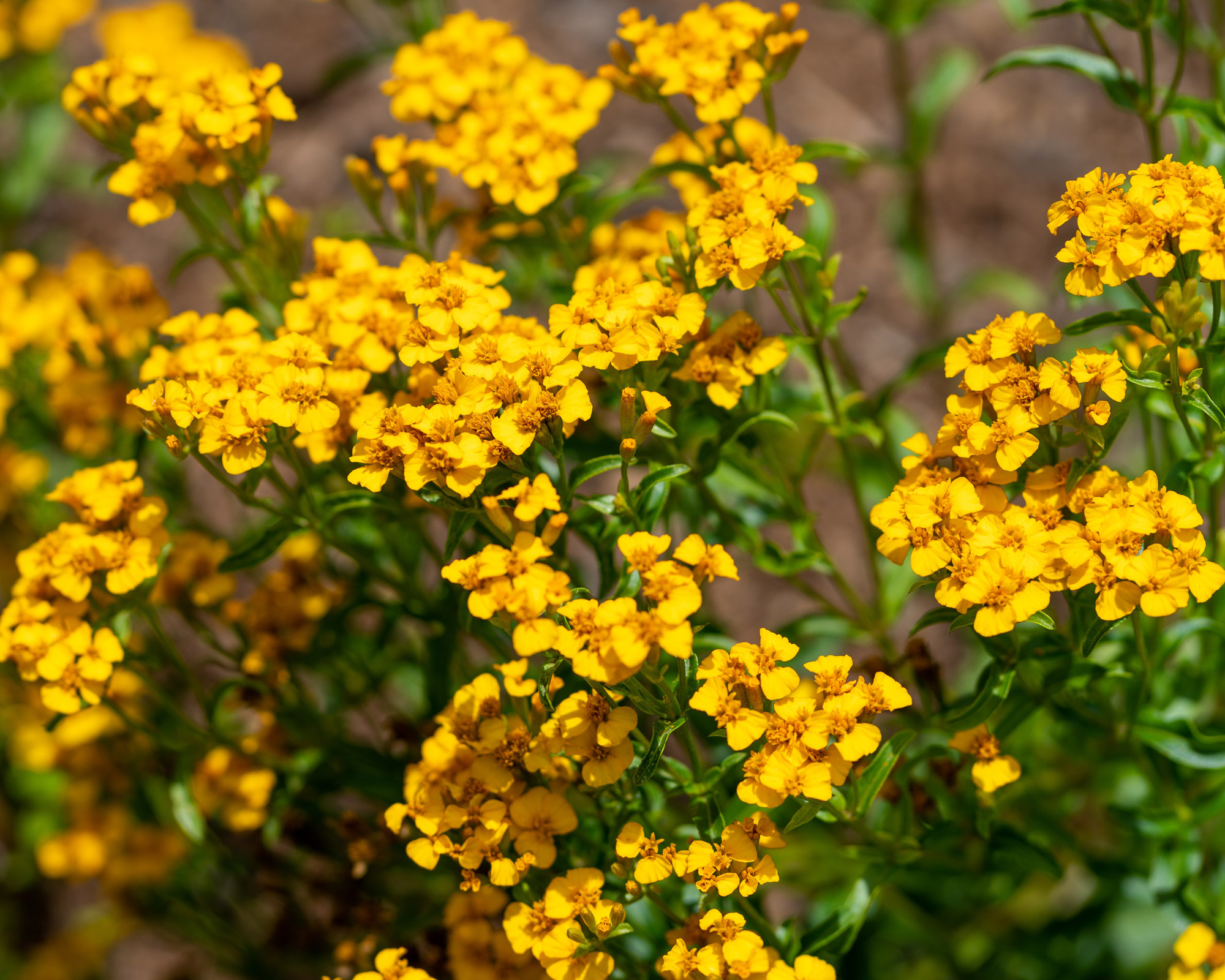
Shimmering Mexican tarragon (or Mexican marigold) from Suttons is both an easy-going, versatile herb and a buoyant bloomer
For a fragrant, liquorice-like perennial edible that doubles as a vibrant ornamental, Mexican tarragon (Tagetes lucida) is a stunning option. But it’s one crop your garden shouldn’t be without, particularly if you’re looking for the best herbs to grow in your garden – and spring is the best time to start some indoors.
With similar aromatic properties to French tarragon, it’s a charming anise-rich edible (with a hint of mint) and a lively addition to casseroles, quiches, sauces and bean dishes. However, this native herb of Guatemala (also known as Mexican marigold) ups the ante with a pretty display of shimmering gold blooms in high summer. And yes, lovers of edible flowers can nibble on their amber blooms.
Mexican tarragon is one of the best drought tolerant plants you can grow. As anyone who knows how to grow marigolds will tell you, tagetes can flourish in tough spots, scrubby soils and containers, and they love sunshine. That said, these heat-loving herbs are lusher and bushier with ample space, weekly watering and a well-drained soil (pH 6.5-7) boosted with aged compost. If you want to grow echinacea or plant a lavender hedge, these knockout edibles also look amazing planted alongside flowers in shades of purple and pink.
Known as a wonder plant, this refreshing treasure has been deployed to treat anxiety, fevers and scorpion bites, make incense and dyes – and enhance chocolate. Springing readily from cuttings and division as well as from seed, it responds well to regular harvesting before flowering. So it’s true what they say: you can’t have too much of a good thing!
9. Gypsy peppers
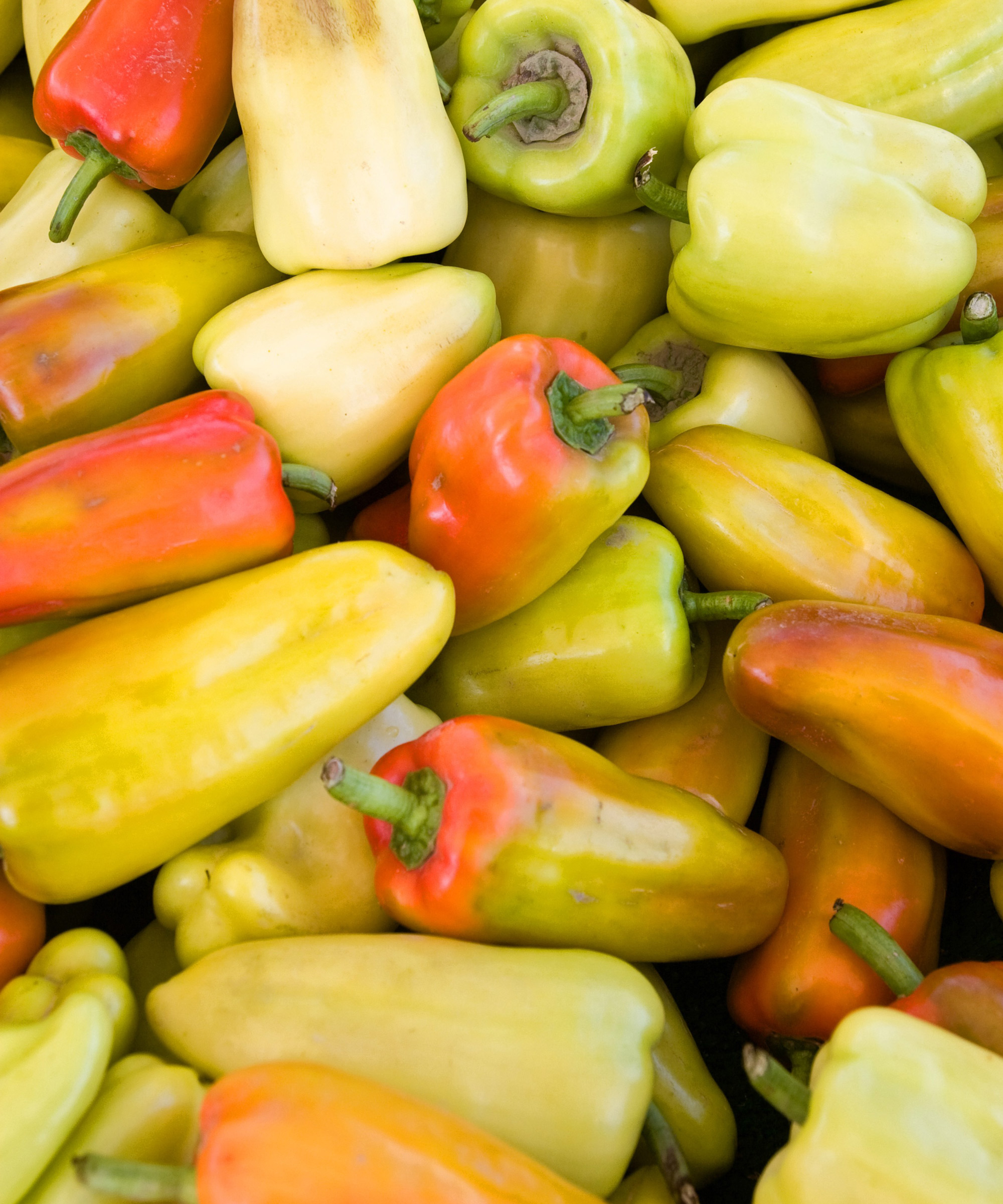
Sweet gypsy peppers like these from Suttons combine the best of bell and bullhorn breeds and are resistant to tobacco mosaic virus, a common pepper foe
You may think it’s too late for starting peppers – but there’s still time for flavorsome fruits of the small and sweet variety. As with many types of eggplant (also mild fruiting members of the nightshade clan), you just need a regular supply of warmth, light and water to kickstart the sugary rush of gypsy peppers. So for greenhouse growers looking for novel container gardening ideas, these capsicum croppers are must-grow vegetables to grow in April.
With a crispy, juicy jamboree of red, orange, yellow and green tones, the gypsy pepper is a cross between the luscious bell and Italian bullhorn (reminiscent of a chunky jalapeno), with a fresh, floral intensity. Perfect if you like growing vegetables in pots, its mouth-popping medley of sweetness is started underglass in small pots or deep trays of moist seed compost. Pot on in individual containers or growing bags (or greenhouse beds) and keep under glass, or grow out from June in warm sunny spots. Use a moist, fertile soil or compost, and give 18in (45cm) between plants. Gypsy peppers make excellent companion plants for kale and also develop piquant flavors alongside basil, tomatoes and cilantro.
Water little and often, stake and pinch out when 8in (20cm) high. Add a potassium liquid feed at flowering, and maintain a warm, humid environment, damping down daily indoors. Fruiting from August (earlier indoors), your eclectic edible bounty is ready to harvest 65 days after planting. And while it seems counter-intuitive, reducing hydration in August helps ripen up those last intoxicating crunchy crops.
10. Cucamelon
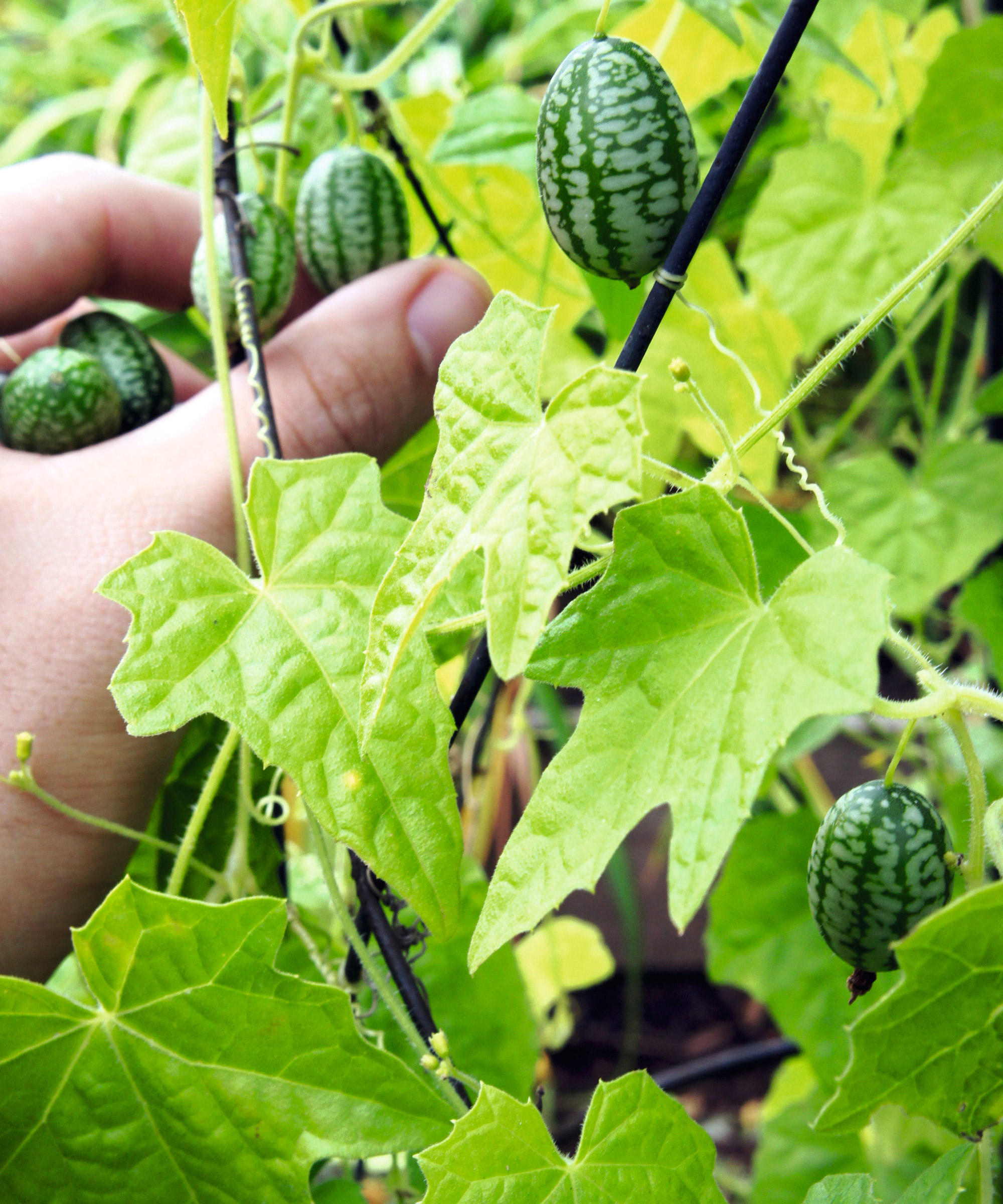
Cucamelon like this one from Suttons is not actually a hybrid of a cucumber and a melon and in fact has a sharp lemony taste
These supercute superfruits are an exceptional final entry in our rundown of essential vegetables to plant in April. Each fruit looks just like a tiny watermelon, packing a monster blast of succulent vitality in mini parcels of surprisingly citrusy freshness.
The good news for those who already know how to grow cucumbers is that there are no massive sowing or growing requirements. The cucamelon, aka the mouse melon or Mexican sour gherkin, is a reassuringly easygoing little cropper. And if you’re stuck for inspiration of what to plant in a greenhouse… well, they don’t come much more inspired than these quirky, tart and tangy treats.
As with cucumbers, you can sow these cucurbits under glass in pots or outside in warm ground. Chris Bonnett recommends starting them in a greenhouse at 23°C (73°F), sowing an inch deep (one seed per pot) and planting out into beds only once the risk of frost has passed. Cucamelons (Melothria scabra) relish sunshine and rich soil. As with other vigorous vine crops, use canes or modest trellis ideas to keep them supported; Lucy recommends twiggy pea sticks to prop up climbing cucamelons. Heat is key, but depending on the types of greenhouse or growing spaces, ventilation is also crucial even for these miniature marvels.
Once established they are drought resistant, but don’t skimp on watering at the flowering stage. Grape-sized fruits are ready for harvest from late July: just check they are firm, says Chris. Pick young for less bite, and get set for a massive yield from your homegrown pepquino. Recommended as a garnish for that hard-earned gin and tonic. You heard it here first!

As assistant editor of Amateur Gardening magazine, Janey's gardening passion was fostered from an early age, when her amazing mum had her deadheading hydrangeas, mulching roses, and propagating strawberry plants from runners for school open days. She's also taken part in lots of conservation and rewilding projects for the RHS and TCV as a way of exploring her horticultural horizons.
